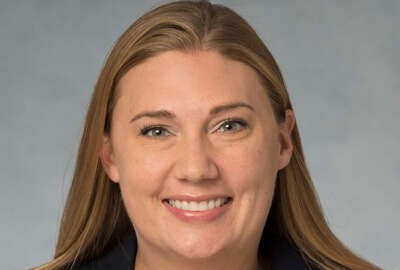
How do you know when (or even if) you can afford to retire?
Are you leaving at the first opportunity? Or are you planning to work extra because you like the job or your coworkers and want to build your annuity?
Senior Correspondent Mike Causey is feeling under the weather, so this is a best-of column that originally ran Aug. 10.
What is or should be the deciding factor in when and if you retire?
Are you leaving at the first opportunity? Or are you planning to work extra because you like the job or your coworkers and want to build your annuity? Are you planning a December or January departure to get the best tax break and carry over the maximum amount of annual leave? Does your departure date depend on your spouse, your health or college bills?
Or you may be one of a growing number of nervous-in-the-civil-service folks who plan to beat a hasty retreat and retire before politicians change the rules surrounding the Civil Service Retirement System and Federal Employees Retirement System plans.
For each of the past five to seven years Congress, and now the White House, have presented plans to change the retirement package. Dozens of proposals have come and gone. Last year, it appeared at least one, maybe two changes would hit the FERS program. But Congress ran out of steam and did nothing.
There have been so many proposed changes, some of them decades old, that it is hard for people who care to keep track. There is the “high-5” — basing annuities on the employee’s highest five-year salary average instead of the current “high-3” formula. If enacted, most feds would have to work longer to get the same starting annuity.
Other proposals range from using a different index that would reduce future cost-of-living adjustments for retirees, thus forcing FERS workers to pay an additional 6 percent for benefits that would be reduced when they retired. There is also the plan to eliminate all future COLAs for FERS retirees and to reduce them slightly for people under the FERS program.
Threats to the retirement system have left some people numb or immune to worry. Others worry a lot, and say their D[eparture]-day is based on getting out before any changes are made — if that would do any good.
Typical is this email from a reader who describes himself as a federal employee looking to retire this year. The question is whether that will happen Sept. 30 or Dec. 30:
“I would like to know if the president’s plan to change the retirement system from the high-3 to the high-5 formula … is in the fiscal 2019 budget? And if so, is it likely to pass? This information will help me decide which date I should pick.
“Unfortunately, nothing in Washington is easy. Remember Mike, the high-3 to high-5 proposal has been around forever and it hasn’t happened yet. Also it is probably the least financially harmful of all the other proposals.” — Mike S.
So we punted and asked Jessica Klement, the top lobbyist for the National Active and Retired Federal Employees. Most of NARFE’s members are retirees, so protecting the CSRS and FERS programs is at the top of its agenda. So far, working with a coalition of federal and postal unions, and groups representing supervisors, managers and career executives — too good!
Her first suggestion to Mike S., not surprisingly, was to urge him to join NARFE in order to “get answers to these and more questions for the low membership fee of $40 a year.” Then she pointed out that “a change in the retirement calculation will require congressional action” because the president cannot do so unilaterally.
“We recommend that people do not change their retirement plans based on something Congress might do,” she said.
Nearly Useless Factoid
By Amelia Brust
Pop-Tarts were named after the Pop Art movement, which was big at the time. The snack’s maker, Kellogg, was eager to avoid the same mistake made by Post, which first conceived of the nonrefrigerated toaster pastry in 1964 but originally named them “Country Squares” to disastrous consumer reception.
Source: Thrillist
Copyright © 2025 Federal News Network. All rights reserved. This website is not intended for users located within the European Economic Area.
Mike Causey is senior correspondent for Federal News Network and writes his daily Federal Report column on federal employees’ pay, benefits and retirement.
Follow @mcauseyWFED





